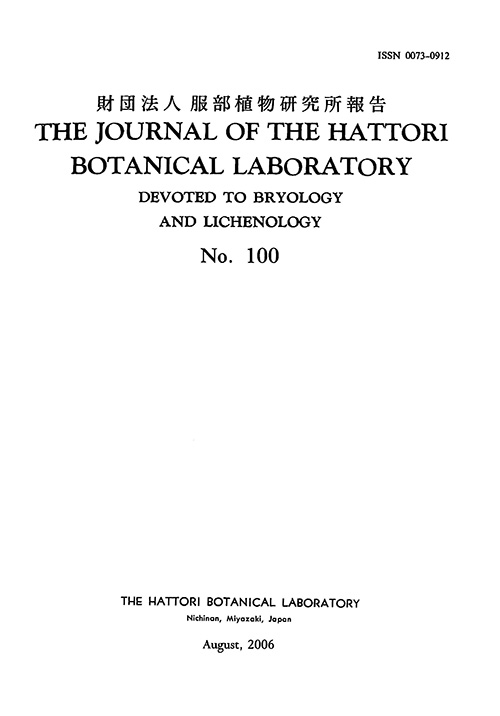81 巻
選択された号の論文の12件中1~12を表示しています
- |<
- <
- 1
- >
- >|
-
1997 年 81 巻 p. 1-52
発行日: 1997/02/20
公開日: 2019/07/05
PDF形式でダウンロード (21283K) -
1997 年 81 巻 p. 53-121
発行日: 1997/02/20
公開日: 2019/07/05
PDF形式でダウンロード (22754K) -
1997 年 81 巻 p. 123-153
発行日: 1997/02/20
公開日: 2019/07/05
PDF形式でダウンロード (13055K) -
1997 年 81 巻 p. 155-173
発行日: 1997/02/20
公開日: 2019/07/05
PDF形式でダウンロード (7766K) -
1997 年 81 巻 p. 175-242
発行日: 1997/02/20
公開日: 2019/07/05
PDF形式でダウンロード (24763K) -
1997 年 81 巻 p. 243-247
発行日: 1997/02/20
公開日: 2019/07/05
PDF形式でダウンロード (1634K) -
1997 年 81 巻 p. 249-256
発行日: 1997/02/20
公開日: 2019/07/05
PDF形式でダウンロード (2843K) -
1997 年 81 巻 p. 257-262
発行日: 1997/02/20
公開日: 2019/07/05
PDF形式でダウンロード (1875K) -
1997 年 81 巻 p. 263-271
発行日: 1997/02/20
公開日: 2019/07/05
PDF形式でダウンロード (2984K) -
1997 年 81 巻 p. 273-279
発行日: 1997/02/20
公開日: 2019/07/05
PDF形式でダウンロード (2473K) -
1997 年 81 巻 p. 281-306
発行日: 1997/02/20
公開日: 2019/07/05
PDF形式でダウンロード (10493K) -
1997 年 81 巻 p. 307-326
発行日: 1997/02/20
公開日: 2019/07/05
PDF形式でダウンロード (7921K)
- |<
- <
- 1
- >
- >|
